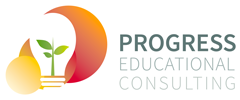TARGET AUDIENCE: WHOLE STAFF
Student voice, student agency and student leadership. What are the differences, what they look like in practice and why they matter? Developing students as leaders of their own learning.
The BIG questions explored
How do we engage students in ‘their’ learning? How do we make ‘their’ learning ‘their’ business and responsibility, rather than the responsibility of the teacher? How do we move from learning being done to students to done with? These are some of the big questions a dialogic learning environment seeks to challenge, and address. (Click here for an A4 outline of the day to share with staff.)
Michael Fullan (A rich seam: How new pedagogies find deep learning, 2014) talks of a true learning partnership between teacher and student which is embedded in ownership through awareness and contribution. So much so that ‘we are all teachers, and we are all learners’ and the roles of teacher and student become comfortably interchangeable.
By intentionally positioning student dialogue about the ‘what’, ‘how’ and ‘how did I go’ of learning, and addressing the balance of who is doing the talking in the classroom, we are positioning students to become empowered as their own teachers who:
- analyse their method of learning and its effectiveness,
- inquire into their world,
- collaborate with teachers and peers alike,
- contribute to a culture of deep learning.
This is student agency (Self efficacy: Effect Size 0.92), and this is powerful.
As Lee Watanabe-Crockett (Future-proofing our learners, 2019) says of students “our crowning glory as educators will reveal itself on the final day when we realise we have managed to make ourselves obsolete to them.”
Dialogic talk is talk with substance. It leverages student learning into discourse-intensive interactions which bring all students into the learning conversation. It positions students as thinkers, investigators, active contributors, activist participants, co-creators, knowers, learners, students and/or community members.” (Edwards-Groves, 2014, Talk moves: A repertoire of practices for productive classroom dialogue)
“Student voice is considered to be one of the best ways to measure student engagement.” (Willams, 2014, NSW secondary school study on engagement, Centre for education, statistics and evaluation, NSW state government)
“Visible learning research (ES) shows that student voice can be highly reliable, rarely includes personality comments and, appropriately used, can be a major resource for understanding and promoting high-impact teaching and learning.” (Hattie, 2015, What works best in education: the politics of collaborative expertise)
Learners as co-contributors to success
We will consider the place of the student as a ‘co-contributor to their own learning’ by investigating student agency, student voice and student leadership within the constructs of a dialogic classroom. Once clear on the opportunities that each brings to learners, and where they fit in the learning environment, we then engage with a range of teaching strategies that invite students to engage in learning as an equal. Teaching strategies that can be delivered immediately on return to the classroom.
This professional learning experience will be successful when you:
- understand the differences between student agency, student voice and student leadership
- understand the nature of a dialogic classroom
- can identify strategies that you can implement to address the balance between teacher talk and student talk
- comfortably allow students to lead dialogue learning in the classroom and become equal contributors
- commit to conferencing and collaborative reflection as primary assessment tools of the dialogic classroom
Have a question for Travis, or need more info? Let’s chat.
Under no obligation, our preference is to spend time with you prior to delivering professional learning for teachers, or tailored leadership guidance, so that the partnership we develop is unique to your school.
When pursuing PROGRESS FOR ALL, All of the time, we believe time spent planning is time well spent.

